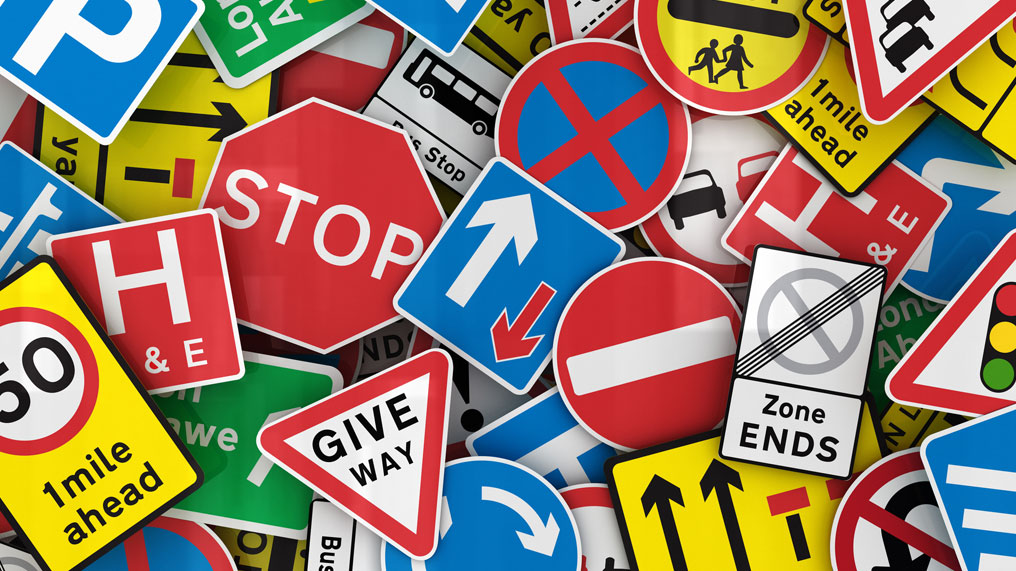If you’re learning how to drive then you’ll not only be practising your clutch control, parallel parking and mirror-signal-manoeuvre, but you'll also be spending a good amount of time reading The Highway Code.
Some people view The Highway Code as a nuisance, retaining only the bare minimum to get through their theory test. But The Highway Code is much more than that. It helps drivers, cyclists and pedestrians stay on the right side of the law, and teaches them how to be more considerate of each other.
Why do we have one?
The Highway Code first appeared in 1931 and has been updated as vehicles, driving practices and laws have changed. The Highway Code UK covers England, Scotland and Wales, with a separate edition for Northern Ireland. The aim of The Highway Code is to make the roads safer for everyone.
The Highway Code book
You can pick up a copy of The Highway Code from many online retailers and most bookshops. The Highway Code can also be accessed for free at the Gov.uk website if you'd prefer to read it online. The Highway Code book is broken down into specific sections for different road users and instances:
-
Rules for pedestrians. General guidance for people on foot, including how to cross the road, understanding different types of crossings and how to use them.
-
Rules for powered wheelchairs and mobility scooters. Covers which types of mobility vehicles can be used on the road as well as on the pavement, and the rules to follow in each case.
-
Rules about animals. For people using horses and horse-drawn vehicles, as well as people with dogs and other animals.
-
Rules for cyclists. Laws for cyclists to follow, including how to handle junctions and roundabouts.
-
Rules for motorcyclists. Covering legal requirements such as helmets and other safety issues, carrying passengers and driving at night.
-
Rules for drivers and motorcyclists. Covers rules about vehicle conditions, towing, passenger safety, drink driving and more.
-
General rules for all drivers and riders. Covers general rules and guidance, including signalling, stopping, speed limits and lane driving.
-
Using the road. General rules on how to use the road safely, such as overtaking, junctions, roundabouts and crossings.
-
Road users requiring extra care. A special section for especially vulnerable road users such as pedestrians and cyclists.
-
Driving in adverse weather conditions. How to handle rain, fog, ice, high winds and storms.
-
Waiting and parking. Rules on parking, waiting and parking enforcement.
-
Motorways. Rules on using motorways safely.
-
Breakdowns and incidents. What to do in the event of a breakdown or traffic incident.
-
Roadworks, level crossings and tramways. Guidance on how to navigate these specialised areas.
-
Light signals controlling traffic. Understanding traffic lights, motorway signals and lane control signals.
-
Signals to road users. How to signal correctly, and understanding others’ signals.
-
Signals by authorised persons. Understanding arm signals from police and other authorised officials.
-
Traffic signs. Understanding the myriad signs you’ll encounter on the road.
-
Road markings. Helping you understand the different road markings and what they mean.
-
Vehicle markings. What various vehicle markings mean, including hazard warning plates.
Those are the main areas. Additional sections give more detail on a range of subjects including penalties, first aid and other forms of guidance. There's a lot to cover, but it’s important to study it carefully and absorb as much as you can when learning to drive.
The Highway Code has a large section on traffic signs, and covers the majority of them
The Highway Code and road signs
There’s a lot of different road signs to remember, some are commonplace (speed limit signs, for example) or self-explanatory (the Stop sign), others are comparatively rare or could seem insignificant unless you know exactly what the symbols and colours mean.
The Highway Code has a large section on traffic signs, and covers the majority of them. However, for a full guide to every sign you need to get a copy of the book Know Your Traffic Signs. The Highway Code has a section detailing the signs that give orders, warnings, directions, information, as well as signs you’ll encounter at roadworks. It’s vital to memorise these as fully as possible, because if you don’t know what to do in response to a road sign you could cause an accident.
The Highway Code and the law
Some elements of The Highway Code are legal requirements, and breaking these rules is a criminal offence that can be met with a fine, penalty points or in some cases a prison sentence. You’ll know which elements these are because they’ll be clearly marked with the words MUST or MUST NOT.
Other guidelines in The Highway Code are not legally binding, but they will help you become a safer driver. Just be aware that if you don’t adhere to rules that have advisory wording in them and you're being prosecuted for a driving offence, then The Highway Code can be used against you in court and will be taken seriously by judges.
The current revisions
The Highway Code undergoes regular revisions, so make sure that you get the latest version of the book. While some revisions may be moderate, others will cover changes to important laws such as drink driving limits, and safety regulations.
To see what updates have been recently added you can visit Gov.UK's The Highway Code updates page.



.png)
